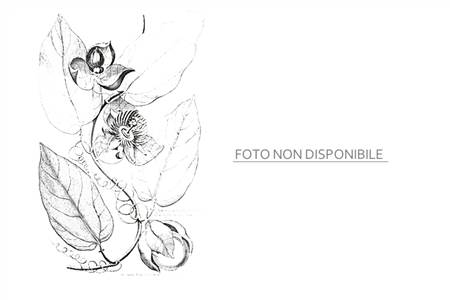
SUBGENUS: passiflora
SUPERSECTION: tacsonia
SECTION: colombiana
SERIES: leptomischae
GEOGRAPHICAL DISTRIBUTION OR ORIGIN:
Ecuador
MINIMUM TEMPERATURE: 2 °C
IDEAL MINIMUM TEMPERATURE: 10 °C
SYNONYMS: Tacsonia ampullacea Mast., P. hieronymi Harms.
ETYMOLOGY: Ampullaceous (Lat. ampullaceus), referred to the calyx whose base is covered by three swollen bracts so much to resemble a small flask.
PHOTOGALLERY:
DESCRIPTION:
It is rare to find plants belonging to the subgenus Passiflora supersection Tacsonia that bloom in white. Among them is this beautiful mountain passionflower, easy to grow and precious for us, as it is resistant to short-lived frosts (minimum temperature: 2°C).
The high summer temperatures have an influence on flowering and, beyond certain limits, are not tolerated, because they cause the plant to deteriorate. If the summer climate is cool (<22°C) the flowering of P. ampullacea can last until autumn, otherwise towards the end of autumn or the beginning of winter.
In central-southern Italy, if placed in a sunny position during the central hours of the day, it will probably have difficulty acclimatising. In Liguria, in its immediate hinterland and on the coast of the great northern lakes, it will find the ideal climate to grow and flourish.
This passionflower is native to the Andes of Ecuador and lives from 2000 up to about 3000 metres.
It has many similarities with other plants of the same supersection such as, for example, P. tripartita var. mollissima. Its pubescent leaves, with 3 very open and acute lateral lobes with serrated margins, measure about 11 cm in length x 12 cm in width.
The cylindrical calyx is very long, measuring about 8-9 cm. The flowers have a diameter of about 9 cm and are made up of white or very light yellow petals and sepals. The short corona situated at the end of the calyx is formed by two series of small white and green filaments.
The elongated ovoid fruit, yellow when ripe, measures about 6 cm in length and is edible.
Propagation is done through cuttings or by direct sowing.